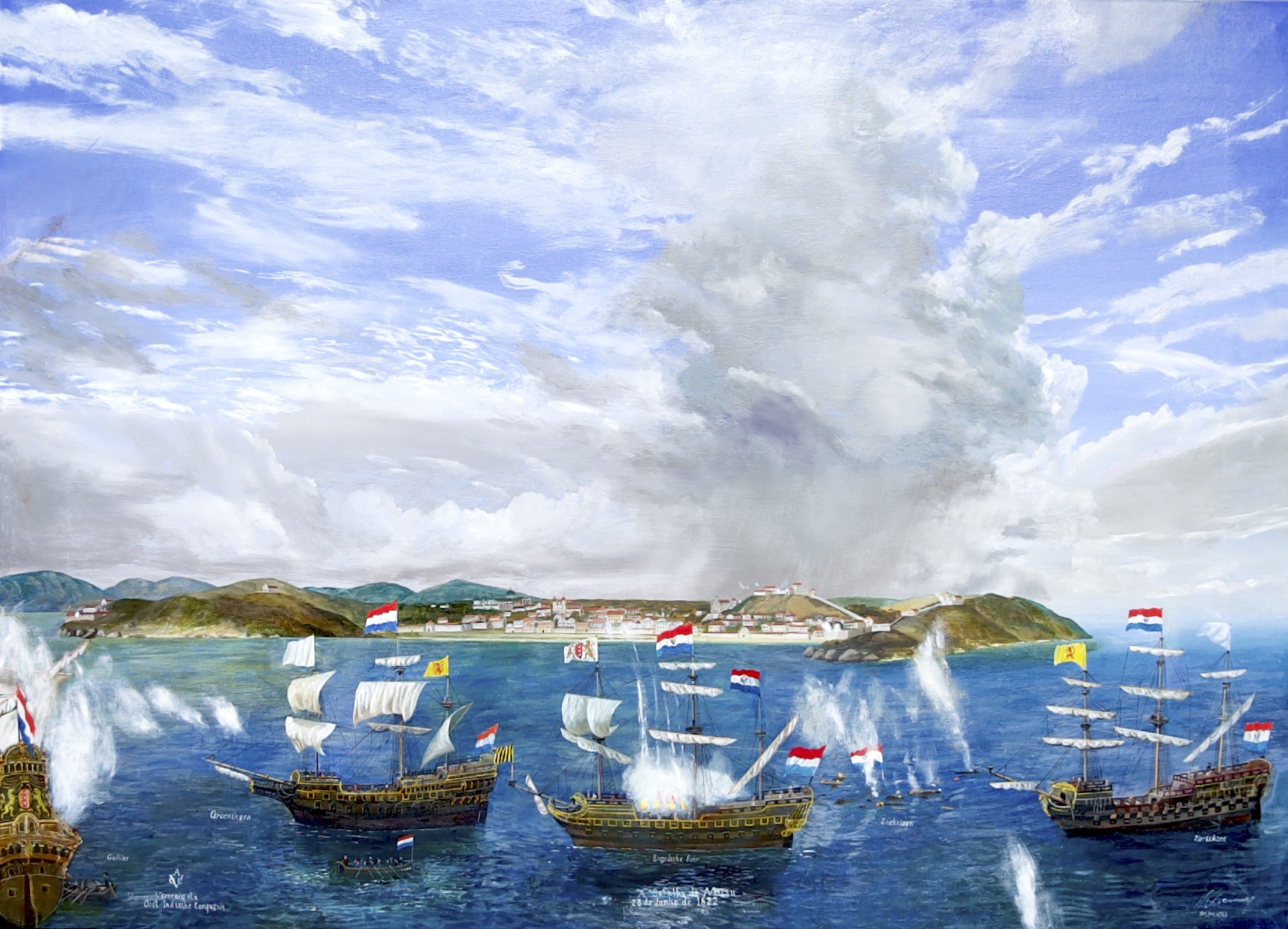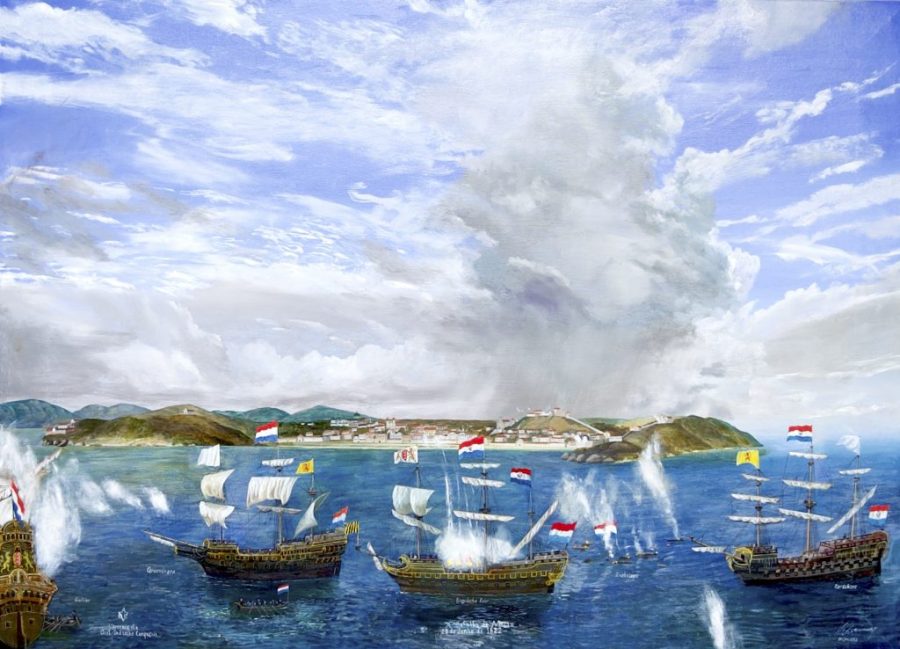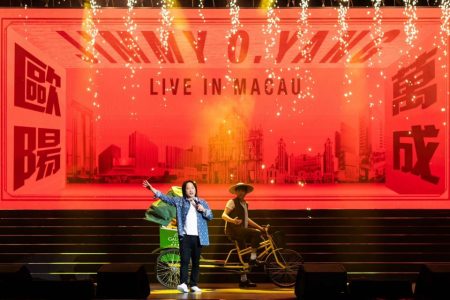The history of the Dutch East India Company, the Vereenigde Oostindische Compagnie (VOC, 1602-1799) in the Eastern seas was not only one of conquest but also one that included dramatic setbacks. One of the most important was the failure of the Dutch mission in its attempt to invade and occupy Macao.
In the first decades of the 17th century, the Dutch fleet had reached 2,000 ships, at the time more than the combined navies of England and France. This powerful fleet brought professional navigators and maritime pilots to militias associating Dutch soldiers with mercenaries from Northern Europe united by the same Protestant opposition to Roman Catholicism and imperial Habsburg Spain.
Arriving in the East to compete with and conquer the Portuguese and Spanish settlements in the first decades of the 17th century, the VOC established its capital in Jayakarta, changing its name to Batavia (present-day Jakarta). After that, the city-port developed following the urban mercantile pattern of Amsterdam.
From Batavia, the VOC trade and military fleet quickly identified Macao as a central platform to access China and to attack Manila, the Spanish stronghold in the region with trade connections to New Spain (today Mexico and the Western United States). The Dutch had already attacked Portuguese trade ships near Macao in 1601, 1603 and 1607 but had never attempted to assault the Sino-Portuguese enclave.
In 1614, Jan Pieterszoon Coen (1587-1629) became director-general of all VOC trade factories, and later governor-general in Batavia (from 1618 to 1629). Coen promoted a militant policy, maintaining that Portuguese and Spanish competition in the Eastern seas should be eliminated by force, a hard strategy that led to conflicts with VOC’s board of directors, the Heren (or ‘Gentlemen’) XVII, who generally preferred to achieve trade profits through less violent and costly adventures.
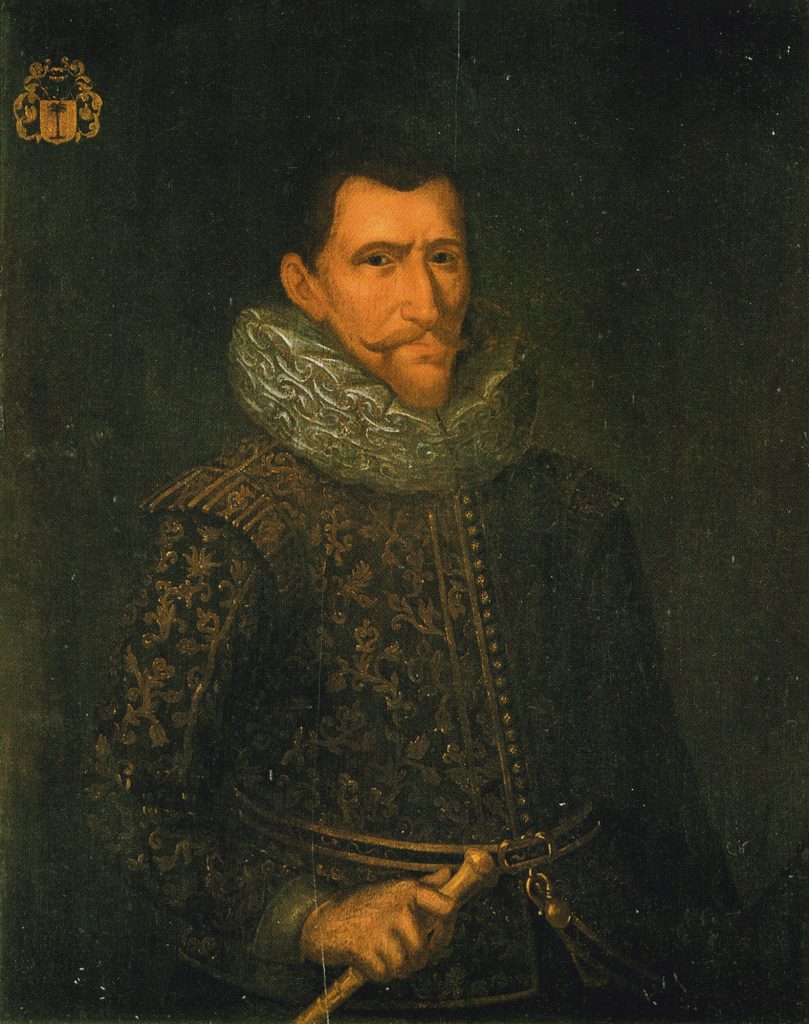
Preparing to conquer Macao
In 1621, Coen started planning military action to conquer Macao, with three main commercial and political goals: controlling the Chinese junk trade to Batavia; removing the Portuguese from the Macao-Nagasaki silver trade; and building a robust naval base to attack the galleons running trade routes between Manila and Acapulco. Coen believed that Macao wouldn’t be able to deflect an invasion led by a dozen strong-armed ships and a military force of 1,000 to 1,500 motivated men. On 10 April 1622, he ordered a Batavian fleet to attack and occupy Macao.
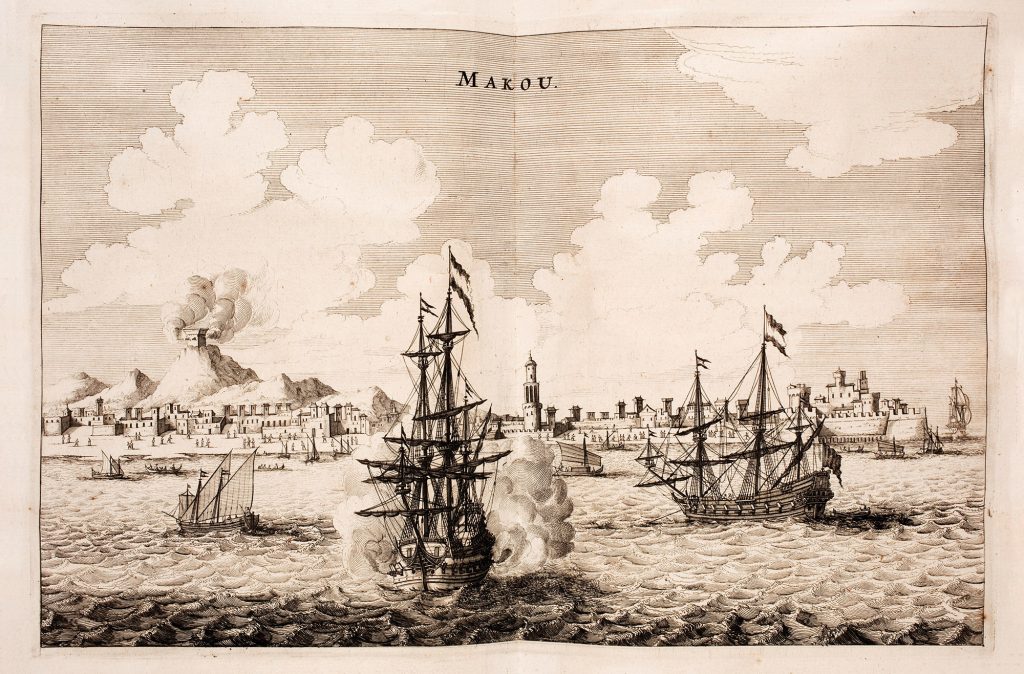
Captain Cornelis Reijersen, who kept a detailed journal of the expedition, set off with eight vessels loaded with modern artillery and 1,024 men. At the end of May, the fleet attacked two Portuguese trading vessels off the southern coast of modern-day Vietnam and received reinforcements of three other ships and 100 men.
On 20 June, the expedition reached a sheltered cove near Taipa island. The captain assembled 13 ships and a military force of 600 European soldiers, 100 Bandanese and dozens of Malay-Indonesian and Japanese mercenaries. On 23 June, he identified the best landing spot: the Cacilhas bay area in the outer harbour.
In the evening, three Dutch ships engaged in an artillery fight against the bulwark of São Francisco at the entry to the inner harbour, but were damaged and retreated at night. At sunrise the next day, two other vessels restarted the attack on the São Francisco bastion only to withdraw again after heavy losses.
The land invasion began at Cacilhas beach as hundreds of attackers from 32 barges disembarked and came ashore. A small Portuguese force of around 150 men led by António Rodrigues Cavalinho, a prominent trader from the Macanese municipal elite, fired against the invaders, seriously hurting Reijersen, who had to be evacuated to his ship. Captain Hans Ruffijn took command of the Dutch and mercenary forces.
The defenders strategically lured the invaders to follow them up to the slopes of Guia Hill. Here, in an area known as Fontinha (fount) due to its water springs, the Dutch forces were bombarded from the under-construction Monte Fortress. A patchwork of militiamen – Portuguese soldiers from the State of India, who had married and retired in Macao; Eurasian traders and their domestic servants; local and maritime Chinese; Spanish merchants and their Tagalog helpers plus hundreds of African slaves – repelled the invaders, immediately killing Captain Ruffijn and hundreds of Dutch soldiers and their mercenaries.
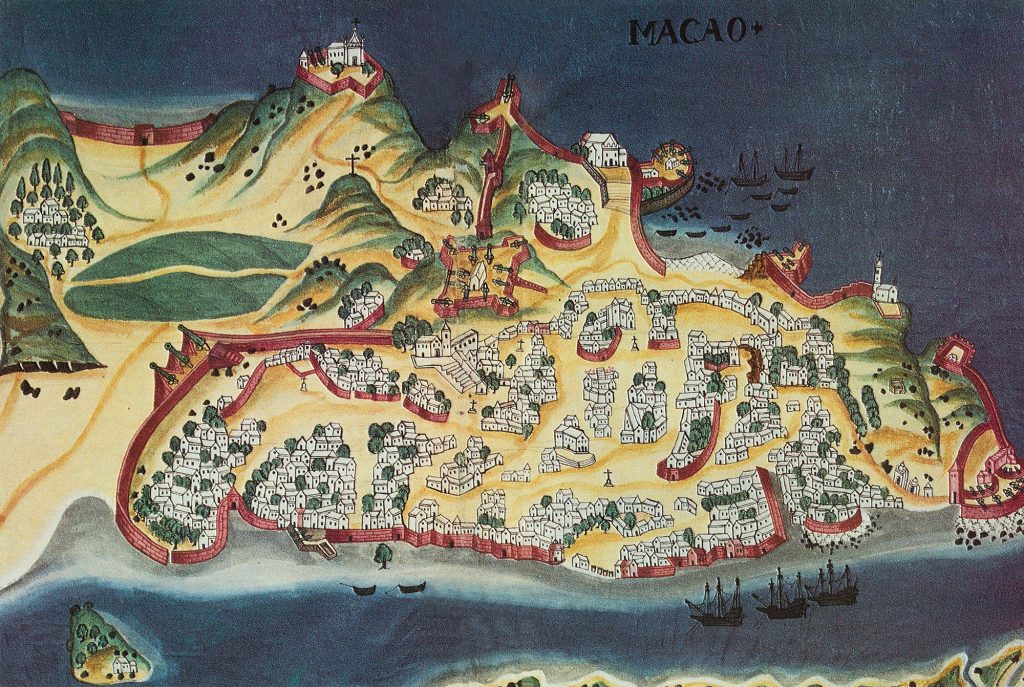
Dutch sources reported the loss of 180 men, hundreds of injured and most of their military equipment. Some Portuguese sources suggest that 300 Dutch were killed and hundreds more held captive, while Spanish documents from the Manila governor increased the number of deceased to 800.
The great defeat
Immediately after the battle, the Portuguese circulated news of their victory, including several embellished reports that amounted to a rewriting of history, while the Dutch began a long process of justification of the failure, producing dozens of reports, including tough inquiries of the survivors. The VOC losses of both men and equipment were very high: for a profitable company, the Dutch defeat in Macao was not tolerable.
The Portuguese, meanwhile, produced two immediate representations of the event, with some divergences. The first – Relación de la Vitoria, printed in Lisbon in 1623 – was written by a Jesuit visitor of the missions, the Portuguese Father Jerónimo Rodrigues (1567-1628). He explained to European Catholic readers that the victory over the Dutch was a Jesuit feat since the missionaries had led the defence against the “heretical” invasion.
The Dominicans, who had settled in Macao by way of Manila, produced their own interpretation of the events. The Portuguese Friar António do Rosário extolled the leadership of the city’s captain Lopo Sarmento de Carvalho, Captain-Major of the Japan Voyage, but his text remained a manuscript. Consequently, an account mobilised by the extensive world network of the Jesuit missionaries spread and was later considered the more authentic account of the Battle of 1622.
In the Jesuit chronicles of the 17th and 18th centuries, Father Manuel Xavier provided a different account, celebrating a convenient hero. The Italian Father Giacomo Rho (1593-1638), he wrote, had fired a straight cannon shot from Mount Fortress; in some versions, the story holds that he destroyed the Dutch ammunition carrier, while in others his shot exploded the admiral Dutch ship, securing the victory.
Dutch VOC sources, including Reijersen’s journal, tell a different version. The Dutch documents, based on several witness accounts, decreased the size of their forces and increased the number of Macao defenders. The sources agree that there were very few Portuguese fighters. The Dutch were mainly attacked by African slaves, who they recalled outnumbering the Dutch forces and not fighting as European “gentlemen” but rather slaughtering the Dutch soldiers, behaving like “savages”. Some documents from the VOC archives even suggest that the Portuguese had purposely drugged their slaves, who barbarically killed and beheaded the surprised Dutch officials and soldiers. All the witnesses questioned by VOC agents agreed that a European army couldn’t oppose the animalistic brutality of the slaves.
Though barely mentioning the role of the African fighters, the “Portuguese” representations, written in Castilian concluded that they beheaded many Dutch, which was interpreted as a kind of memory of the day Saint John the Baptist was beheaded. Civil and religious authorities in the following years then made 24 June the city’s day and an observant Catholic holiday in honour of the miraculous intercession of the saint.

The role of Mozambican slaves
For a historian researching the battle of 24 June 1622, rigour forces us to emphasise that the invading Dutch forces could not have been defeated without the mobilisation of the African slaves in the enclave. Most were Macuas and Macondes, ethnic groups native to modern-day northern Mozambique and neighbouring nations, brought by the slave boats from the “carreira da Índia” to Portuguese enclaves Goa, Malacca and Macao.
In the early 1600s, there were already 1,000 slaves in Macao. At the time, their only prospect for a tolerable life was to align themselves as closely as they could with the wishes of their Portuguese masters. These slaves constituted the private militias of wealthy Portuguese and Eurasian merchants; did the heaviest work, from artillery foundries to bakeries; and were diligent domestic servants, providing water to their owners’ houses and emptying their waste each day.
Traditional history has generally forgotten these communities and praised the more powerful classes and their dominant heroes. Still, the very rich and capitalist VOC has fully documented that it lost the battle of Macao in 1622 at the hands of the brave, unexpected militiamen: the African slaves who protected the city.
